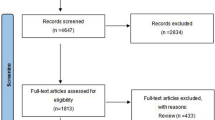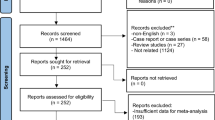Abstract
Botulinum toxin (BTX) treatment for overactive bladder and detrusor overactivity is becoming increasingly recognized as an excellent therapeutic option for treating patients refractory to anticholinergic agents. Results from open-label studies have suggested that this therapy is effective in neurogenic and idiopathic detrusor overactivity, yet validating evidence from randomized, placebo-controlled trials has been unavailable. The exact mechanism of action of BTX in the bladder is controversial, although evidence suggests that apart from preventing the presynaptic release of acetylcholine from the parasympathetic innervation to the bladder, it might have an effect on sensory mechanisms. The latter hypothesis could in part explain its effect on symptoms such as urgency. The purpose of this Review is to present the results of randomized, placebo-controlled trials in which BTX treatment for detrusor overactivity was investigated. Also the evidence supporting its potential dual mechanism of action in the bladder will be considered. In addition, the various techniques of administration of BTX are discussed and avenues for further research suggested.
Key Points
-
Botulinum toxin is becoming established as an excellent second-line therapeutic option in patients with refractory overactive bladder
-
Evidence from small, randomized, placebo-controlled trials indicates that botulinum toxin is an effective treatment for both neurogenic and idiopathic detrusor overactivity
-
Evidence suggests that botulinum toxin affects sensory neuronal pathways in the bladder, which leads to inhibition of the release of various neurotransmitters and downregulation in the expression of vanilloid and purinergic receptors
-
Currently, injection techniques of botulinum toxin vary worldwide but no conclusive data are available to support one method over another
This is a preview of subscription content, access via your institution
Access options
Subscribe to this journal
Receive 12 print issues and online access
$209.00 per year
only $17.42 per issue
Buy this article
- Purchase on Springer Link
- Instant access to full article PDF
Prices may be subject to local taxes which are calculated during checkout

Similar content being viewed by others
References
Karsenty G et al. (2006) Injection of botulinum toxin type A in the urethral sphincter to treat lower urinary tract dysfunction: a review of indications, techniques and results. Can J Urol 13: 3027–3033
Chuang YC et al. (2006) The potential and promise of using botulinum toxin in the prostate gland. BJU Int 98: 28–32
Schurch B et al. (2005) Botulinum toxin type a is a safe and effective treatment for neurogenic urinary incontinence: results of a single treatment, randomized, placebo controlled 6-month study. J Urol 174: 196–200
Popat R et al. (2005) A comparison between the response of patients with idiopathic detrusor overactivity and neurogenic detrusor overactivity to the first intradetrusor injection of botulinum-A toxin. J Urol 174: 984–989
Finney SM et al. (2006) A double-blind, placebo controlled study investigating efficacy of botulinum toxin type A (Dysport) in MS related overactive bladder syndrome (OAB): Provisional 12-week clinical results [abstract]. BJU Int 97: 31–32
Ehren I et al. (2006) Treatment with botulinum toxin A in neurogenic bladder dysfunction—a randomised double-blind study with Dysport [abstract]. Eur Urol 5 (Suppl): 299
Sahai A et al. Efficacy of botulinum toxin-A in treating idiopathic detrusor overactivity: results from a single center, randomised, double blind, placebo controlled trial. J Urol (in press)
Ghei M et al. (2005) Effects of botulinum toxin B on refractory detrusor overactivity: a randomized, double-blind, placebo controlled, crossover trial. J Urol 174: 1873–1877
Odergren T et al. (1998) A double blind, randomised, parallel group study to investigate the dose equivalence of Dysport and Botox in the treatment of cervical dystonia. J Neurol Neurosurg Psychiatry 64: 6–12
Schmid DM et al. (2006) Experience with 100 cases treated with botulinum-A toxin injections in the detrusor muscle for idiopathic overactive bladder syndrome refractory to anticholinergics. J Urol 176: 177–185
Sahai A et al. (2006) Urodynamic assessment of poor responders following intra-detrusor injections of botulinum toxin A for overactive bladder [abstract]. J Endourol 20 (Suppl 1): A60
Patki PS et al. (2006) Botulinum toxin-type A in the treatment of drug-resistant neurogenic detrusor overactivity secondary to traumatic spinal cord injury. BJU Int 98: 77–82
Ruffion A et al. (2006) What is the optimum dose of type A botulinum toxin for treating neurogenic bladder overactivity? BJU Int 97: 1030–1034
Wyndaele JJ and Van Dromme SA (2002) Muscular weakness as side effect of botulinum toxin injection for neurogenic detrusor overactivity. Spinal Cord 40: 599–600
Grosse J et al. (2005) Success of repeat detrusor injections of botulinum a toxin in patients with severe neurogenic detrusor overactivity and incontinence. Eur Urol 47: 653–659
Comperat E et al. (2006) Histologic features in the urinary bladder wall affected from neurogenic overactivity—a comparison of inflammation, oedema and fibrosis with and without injection of botulinum toxin type A. Eur Urol 50: 1058–1064
Haferkamp A et al. (2004) Lack of ultrastructural detrusor changes following endoscopic injection of botulinum toxin type a in overactive neurogenic bladder. Eur Urol 46: 784–791
Dong M et al. (2006) SV2 is the protein receptor for botulinum neurotoxin A. Science 312: 592–596
Schurch B et al. (2000) Botulinum-A toxin for treating detrusor hyperreflexia in spinal cord injured patients: a new alternative to anticholinergic drugs? Preliminary results. J Urol 164: 692–697
Sahai A et al. (2005) Botulinum toxin for the treatment of lower urinary tract symptoms: a review. Neurourol Urodyn 24: 2–12
Apostolidis A et al. (2006) Proposed mechanism for the efficacy of injected botulinum toxin in the treatment of human detrusor overactivity. Eur Urol 49: 644–650
Smet PJ et al. (1997) Distribution and colocalization of calcitonin gene-related peptide, tachykinins, and vasoactive intestinal peptide in normal and idiopathic unstable human urinary bladder. Lab Invest 77: 37–49
Khera M et al. (2004) Botulinum toxin A inhibits ATP release from bladder urothelium after chronic spinal cord injury. Neurochem Int 45: 987–993
Rapp DE et al. (2006) Botulinum toxin type a inhibits calcitonin gene-related peptide release from isolated rat bladder. J Urol 175: 1138–1142
Chuang YC et al. (2004) Intravesical botulinum toxin a administration produces analgesia against acetic acid induced bladder pain responses in rats. J Urol 172: 1529–1532
Atiemo H et al. (2005) Effect of botulinum toxin on detrusor overactivity induced by intravesical adenosine triphosphate and capsaicin in a rat model. Urology 65: 622–626
Apostolidis A et al. (2005) Decreased sensory receptors P2X3 and TRPV1 in suburothelial nerve fibers following intradetrusor injections of botulinum toxin for human detrusor overactivity. J Urol 174: 977–982
Welch MJ et al. (2000) Sensitivity of embryonic rat dorsal root ganglia neurons to Clostridium botulinum neurotoxins. Toxicon 38: 245–258
Purkiss JR et al. (1998) A method for the measurement of [3H]-glutamate release from cultured dorsal root ganglion neurons. Biochem Soc Trans 26: S108
Cui M et al. (2004) Subcutaneous administration of botulinum toxin A reduces formalin-induced pain. Pain 107: 125–133
Aoki KR (2005) Review of a proposed mechanism for the antinociceptive action of botulinum toxin type A. Neurotoxicology 26: 785–793
Jankovic J and Schwartz K (1990) Botulinum toxin injections for cervical dystonia. Neurology 40: 277–280
Sahai A et al. (2006) Techniques for the intradetrusor administration of botulinum toxin. BJU Int 97: 675–678
Harper M et al. (2003) A minimally invasive technique for outpatient local anaesthetic administration of intradetrusor botulinum toxin in intractable detrusor overactivity. BJU Int 92: 325–326
Smith CP and Chancellor MB (2005) Simplified bladder botulinum-toxin delivery technique using flexible cystoscope and 10 sites of injection. J Endourol 19: 880–882
Smith CP et al. (2005) Single-institution experience in 110 patients with botulinum toxin A injection into bladder or urethra. Urology 65: 37–41
Schulte-Baukloh H and Knispel HH (2005) A minimally invasive technique for outpatient local anaesthetic administration of intradetrusor botulinum toxin in intractable detrusor overactivity. BJU Int 95: 454
Karsenty G et al. (2005) Botulinum toxin-A (BTA) in the treatment of neurogenic detrusor overactivity incontinence (NDOI)—a prospective randomized study to compare 30 vs 10 injection sites [abstract]. Neurourol Urodyn 24: 5–6
Boy S et al. (2006) Botulinum toxin injections into the bladder wall—a morphological evaluation of the injection technique using magnetic resonance imaging [abstract]. Eur Urol 5 (Suppl): 299
Khera M et al. (2005) In vivo effects of botulinum toxin A on visceral sensory function in chronic spinal cord-injured rats. Urology 66: 208–212
Acknowledgements
The GKT Botulinum Study Group is composed of Mr Arun Sahai, Mr Mohammad Shamim Khan, Mr Prokar Dasgupta, Professor Kenneth Smith, Dr Norman Gregson, Dr Yue Sun, and Professor Richard Hughes.
Author information
Authors and Affiliations
Consortia
Corresponding author
Ethics declarations
Competing interests
A Sahai, MS Khan and P Dasgupta are currently investigators for Allergan, Inc., which manufactures and markets botulinum toxin-A (BOTOX®). N Gregson and K Smith declared they have no competing interests.
Rights and permissions
About this article
Cite this article
Sahai, A., Khan, M., Gregson, N. et al. Botulinum toxin for detrusor overactivity and symptoms of overactive bladder: where we are now and where we are going. Nat Rev Urol 4, 379–386 (2007). https://doi.org/10.1038/ncpuro0839
Received:
Accepted:
Issue Date:
DOI: https://doi.org/10.1038/ncpuro0839



